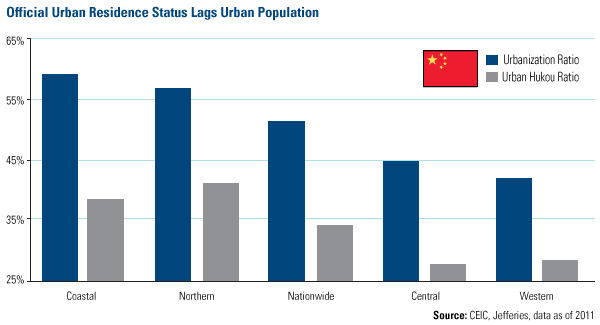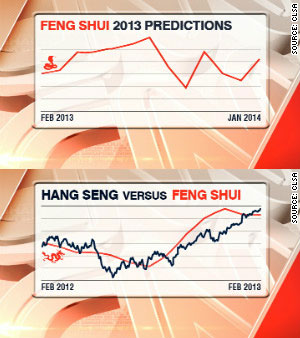Michael Ding, portfolio manager of the China Region Fund (USCOX), was raised in rural Dalian and remembers what it was like living under the registration system, which he says was driven by the government’s need to ration food. Still fresh in leaders’ minds were memories of millions of people dying from starvation, and the government wanted to ensure there was enough food for urban residents.
With this upbringing, Michael developed a knack for quickly understanding rationing systems, as his family was unable to purchase additional food regardless if they had money or grow vegetables in their backyard.
So while it was reported that more than half of China’s population lives in an urban area, only about one-third of the total population holds an urban hukou. Andy Rothman from CLSA calls these roughly 250 million migrants “quasi-urbanized,” which means that one worker lives in the city, while the rest of the family remains in the rural home. This equates to a real nationwide urbanization rate of only about 35 percent. You can see in Jefferies’ chart how the official urban residence status differs across the country compared to the urbanization ratio.


If the government reforms the hukou, it is estimated that 600 million people might move to the cities over the next 20 years. This includes 300 million migrants becoming “new urban residents” and 300 million rural residents moving to urban areas by 2030, says Citi Research. According to its data, “urbanization could bring another 150 million surplus rural laborers to the cities.”
“[P]otential reforms in hukou registration and healthcare systems together with extended substance allowance will likely encourage more migrant workers to live in cities for the long term with higher consumption propensities,” says Morgan Stanley. Because urbanization is a big driver for the housing market, CLSA believes property sales in China’s 600 third-tier cities could significantly benefit from hukou reform, as about 100 million migrant workers currently reside in these cities.

The government has begun to factor in the massive ramifications of these families moving to the cities. According to J.P. Morgan, “investments in urbanization are already placing a heavier emphasis on the human benefits of development.” Regarding social housing, in 2012, the country met its goal of starting on 7.2 million units and completing about 5 million units, according to the research firm. For 2013, China’s plans call for an additional 10 million units that will be under construction or complete by the end of the year.
What to Expect in the Year of the Snake: Bite or Might?
Maybe both, if you follow CLSA’s Feng Shui Index. Every year since 1992, CLSA Asia-Pacific Markets team takes a lighthearted look at the fortunes that may befall the Hang Seng Index.
 |
During the Year of the Dragon, CLSA’s predictions of the Hang Seng Index came amazingly close to how stocks actually performed. Equities in China fell into a bit of a slump toward the beginning of the year. Then the Dragon woke up and fired up the markets toward the latter half of the Chinese year.
Over the next several months CLSA foresees Chinese stocks to slink like a snake, rising in the beginning of the year before sidewinding in the latter half of the year. According to CLSA, the elements fall out of balance, as “the crucial Fire element all but dies away, Earth falls, Metal overshoots and Water puts a damper on prospects.”
Download your copy of CLSA’s Feng Shui Index here.
In times of growth, a young snake sheds its skin often, sloughing off a worn exterior to reveal a fresh layer of scales. The Asian giant has experienced growth the world has never seen before, and during the Year of the Snake, we look forward to seeing a new leadership take action, sloughing off worn policies to unveil a stronger vibrant economy. See how we’ve positioned the China Region Fund to benefit from this potential growth.













